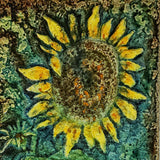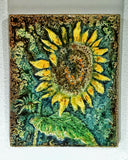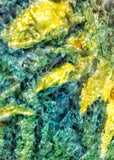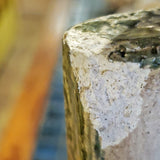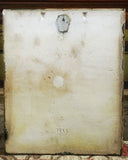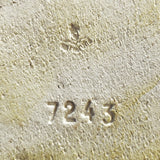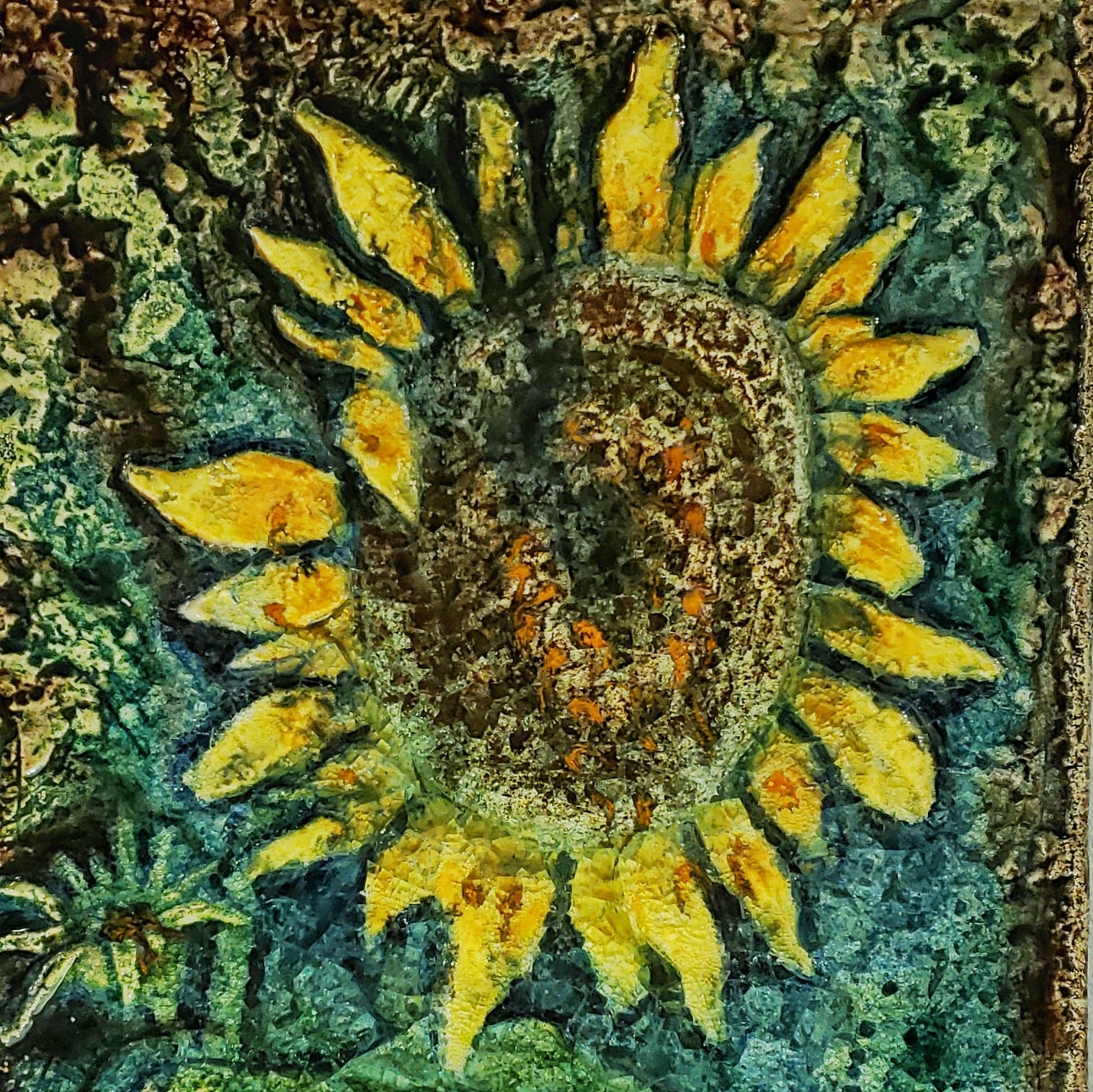
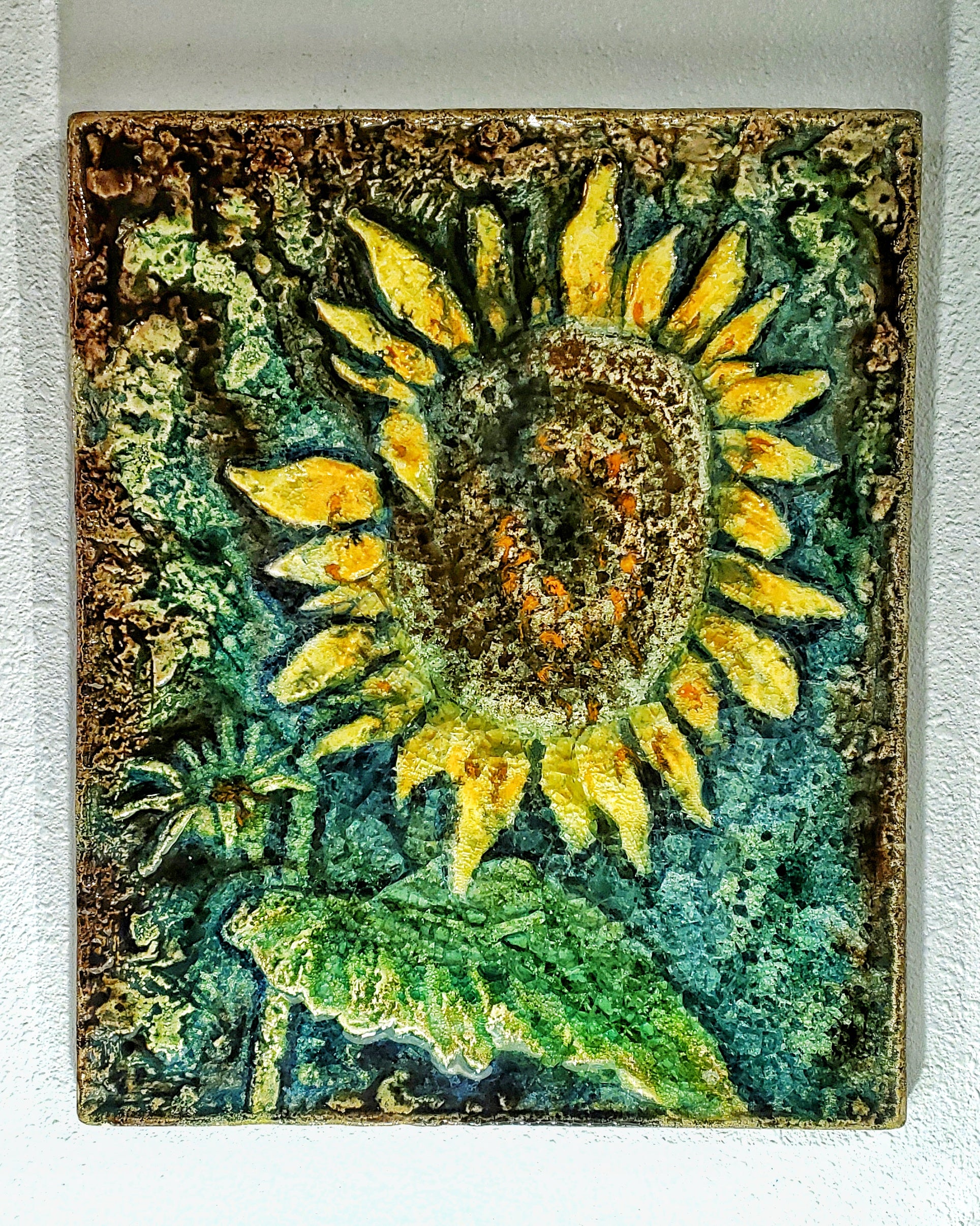
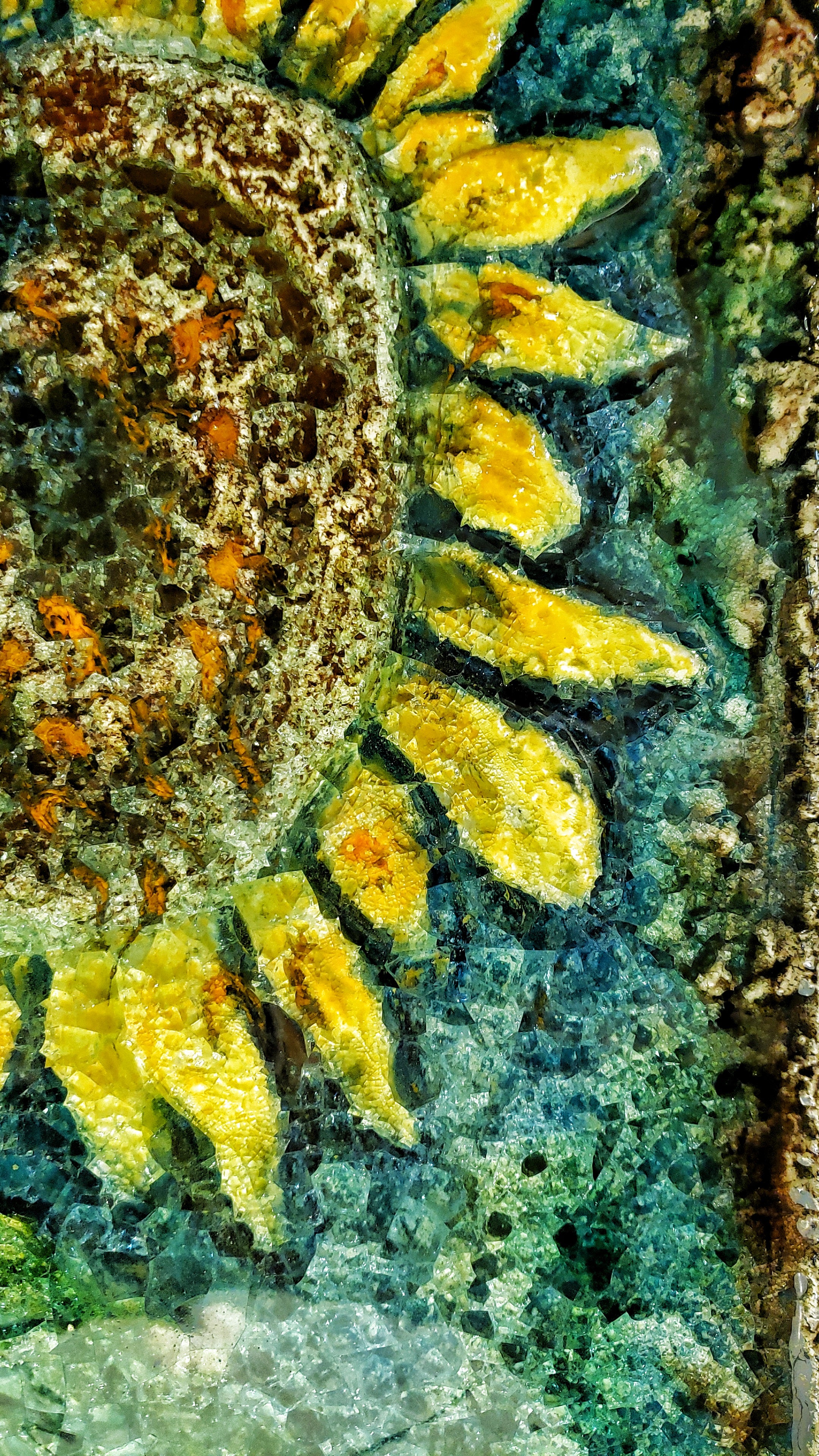
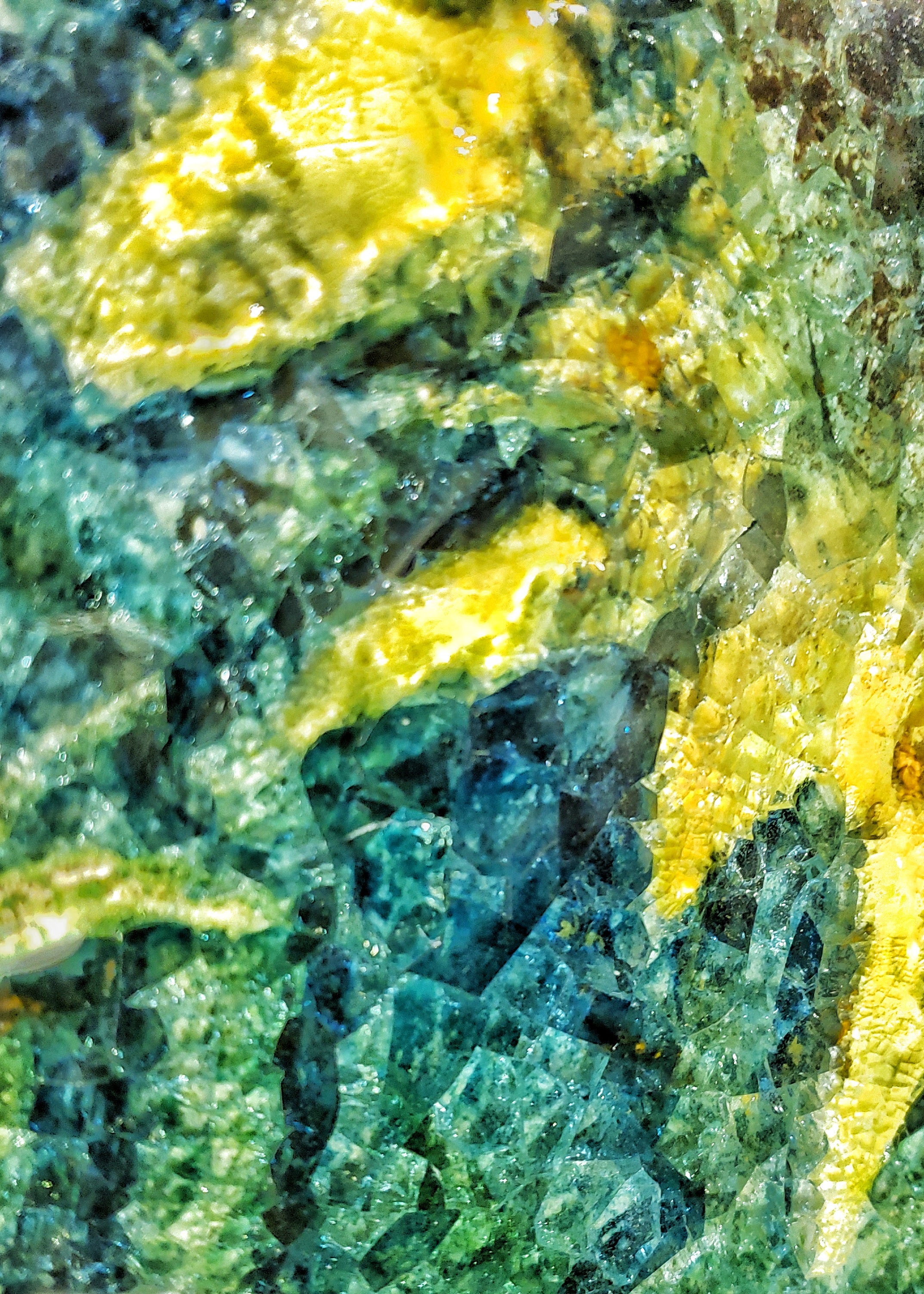
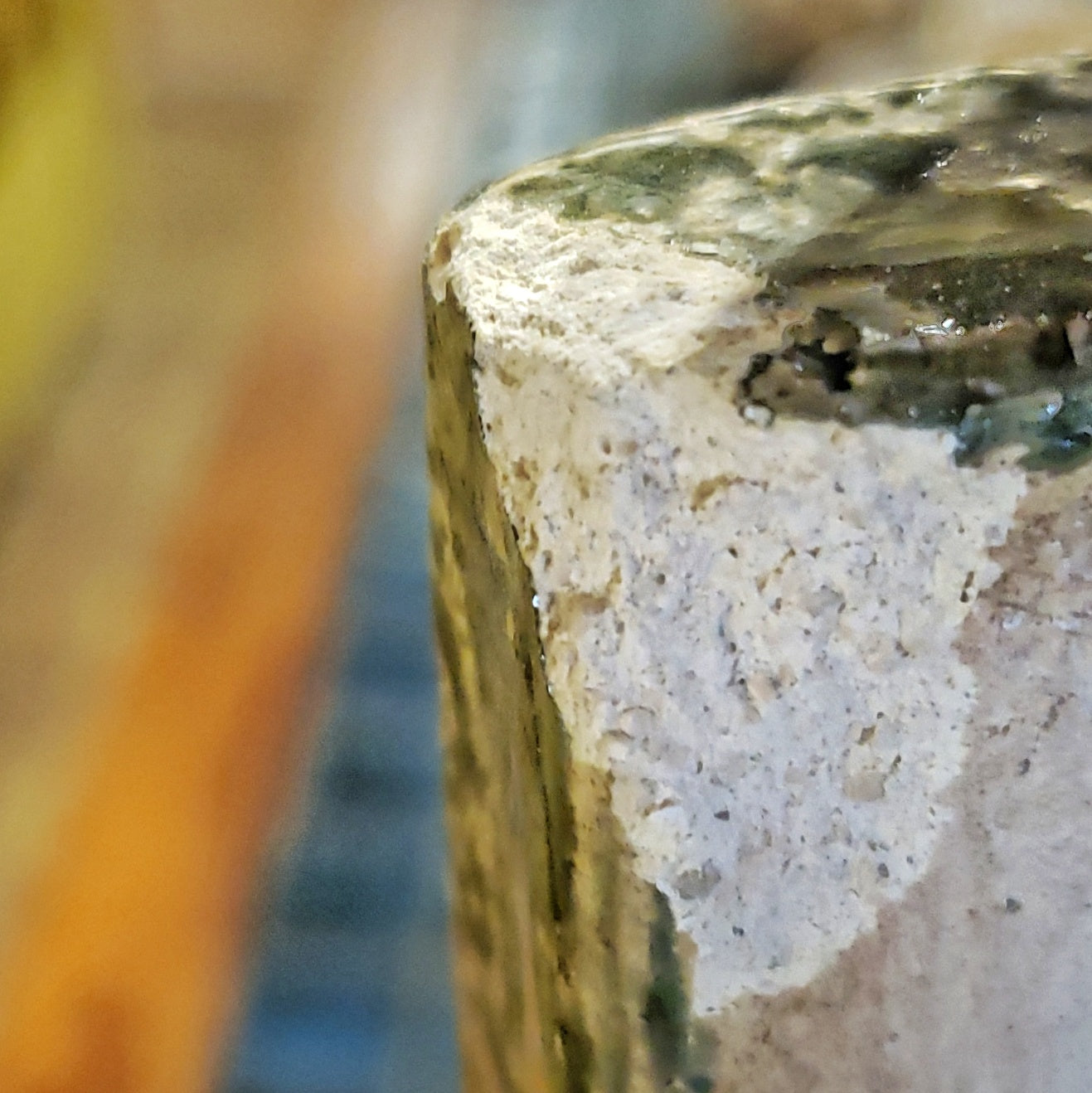
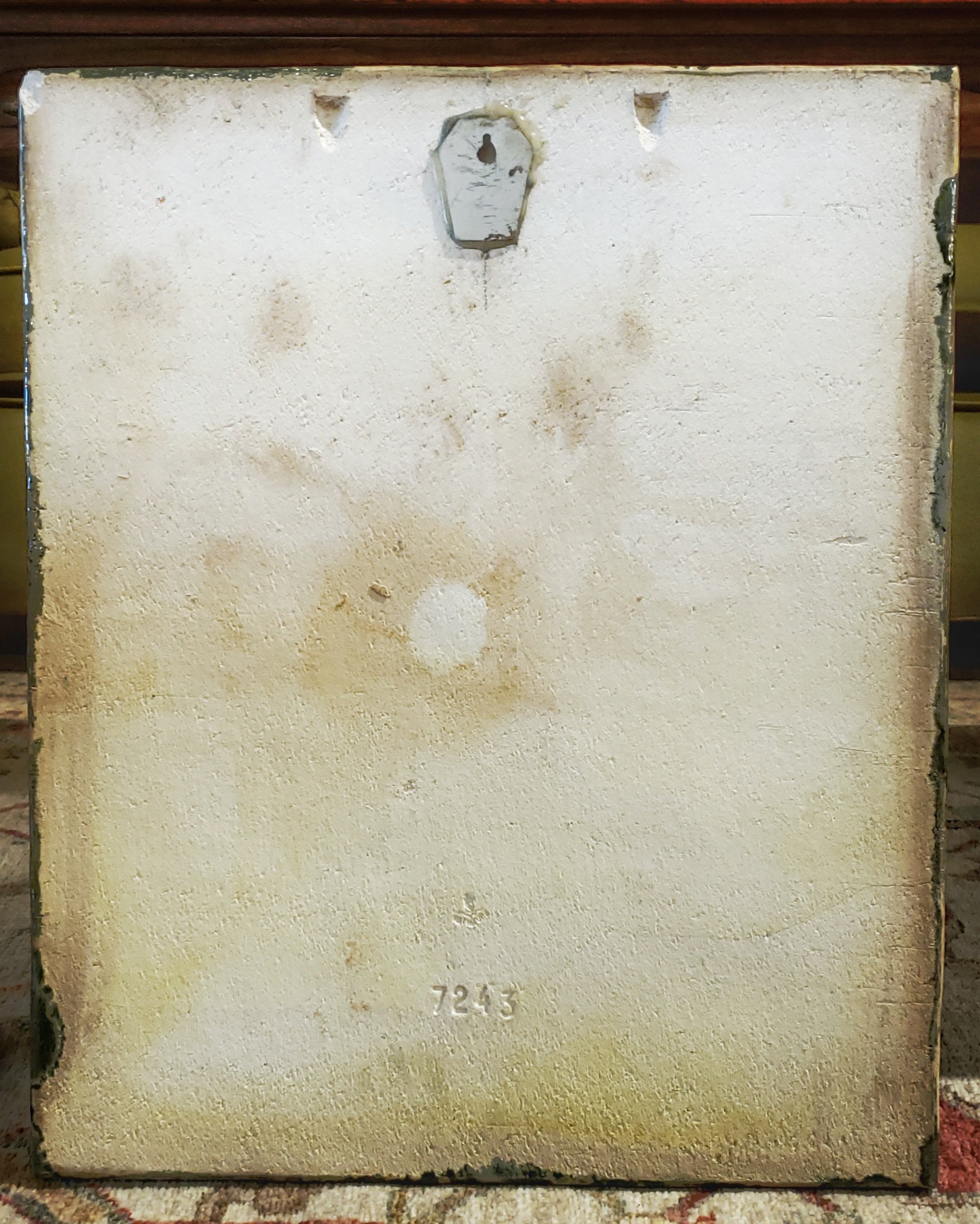
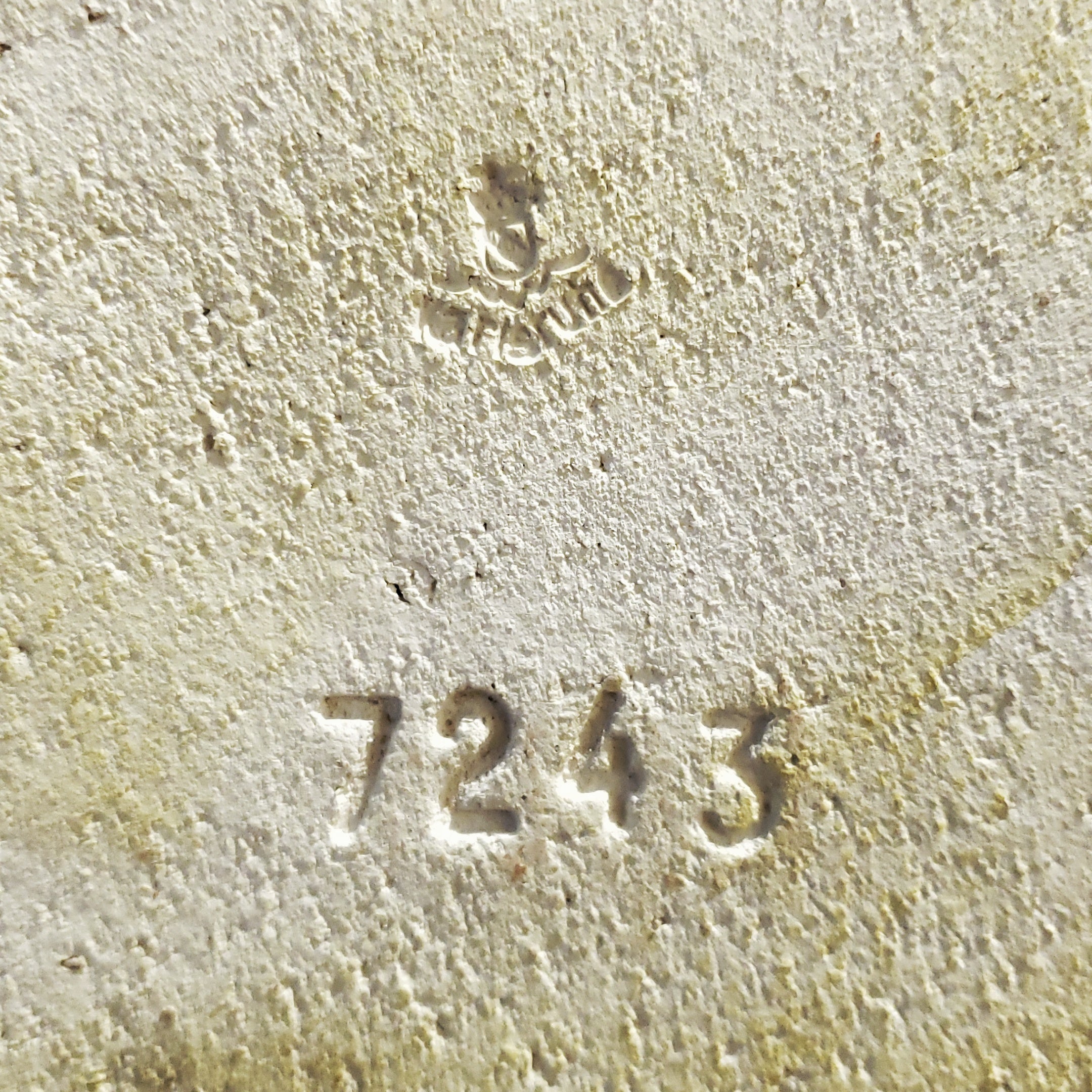
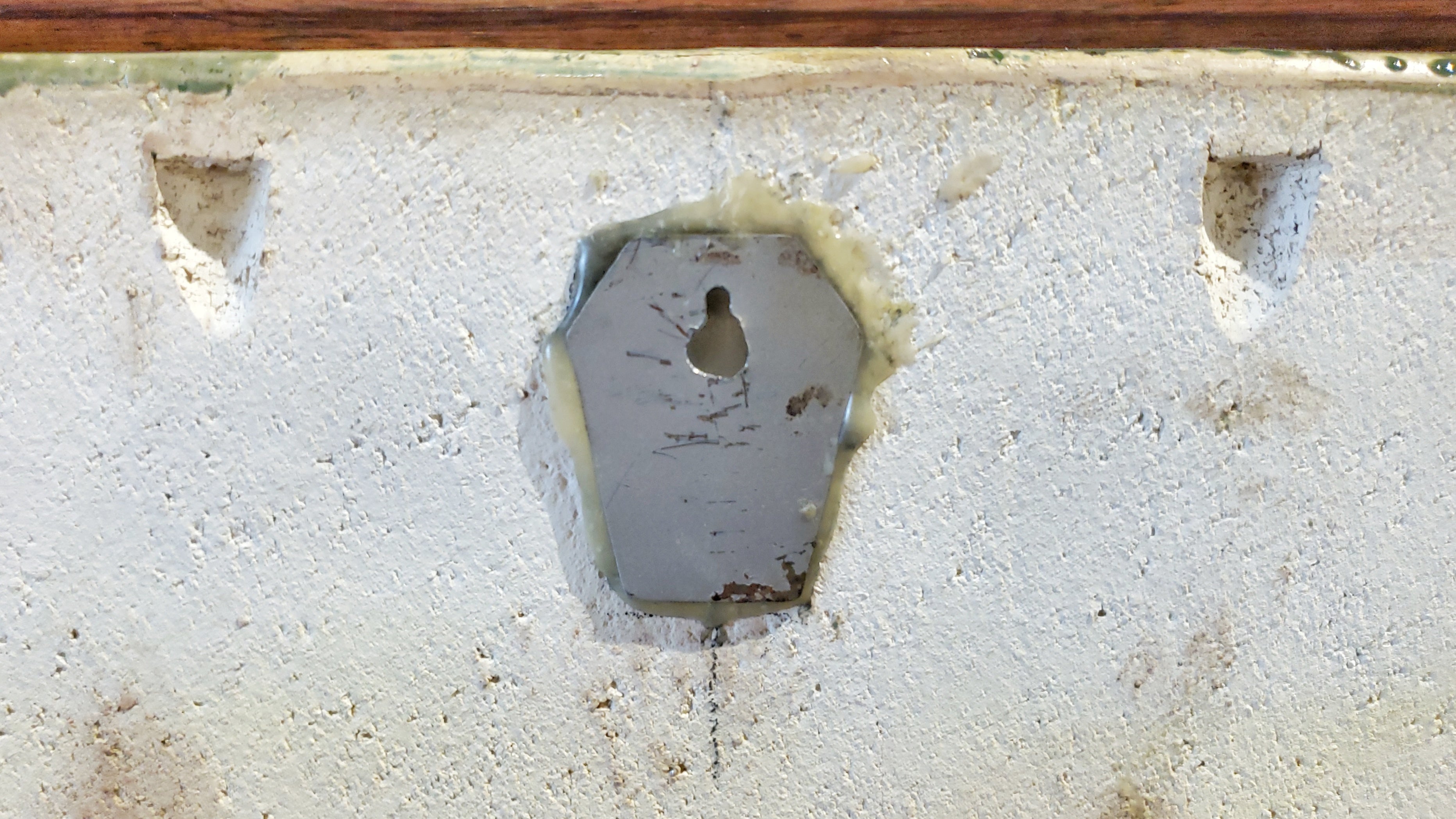
WERNER MESCHEDE TILE FOR MAJOLIKA KARLSRUHE 7243
CONTACT US HERE ABOUT THIS ITEM.
A beautiful sunflower wall tile by Werner Meschede from the well-known series of botanical plaques he produced for MAJOLIKA KARLSRUHE between 1965 and 1978. The three-dimensional depth of the glassy surface is difficult to capture photographically but, trust us, is incredible in person. This plaque would serve as wonderful room décor and is suitable for framing. Engraved inverso with the standard MAJOLIKA KARLSRUHE mark and form number. Slight damage to top right corner [see photo].
WERNER MESCHEDE was one of the most significant majolica designers of the 20th century. Born in Stuttgart in 1925, he studied under the tutelage of the ceramic artist Max Laüger and began work as a potter in Schorndorf, a small town near Stuttgart, after WWII. In 1958 Meschede received his mastership from the State Academy of Fine Arts Stuttgart. He was soon hired by MAJOLIKA KARLSRUHE, and for many years he served as its director of screen-printing, producing architectural and garden ceramics as well, both singularly and in series. Meschede is well known for his botanical series of majolica wall plaques and tiles, as well as numerous lava-glaze vases, crackled items, and plates.
MAJOLIKA KARLSRUHE (MANUFACTORY) was established by Grand Duke Friedrich I of Baden (1826–1907) in 1901, at the behest of its founders, artists Wilhelm Süs (1861–1933) and Hans Thoma (1839–1924). An “idyllic” spot was chosen in the Duke’s residential city, near the palace gardens, a location designed to be a point of cultural interest. The connection would be highlighted for the plant’s centennial by the installation of a “blue ray” (Blauer Strahl in German), a path of blue majolica ceramic tiles physically connecting the palace tower to the factory. Walking the vibrant light blue path allows visitors to follow the historical axis from the center of princely political power to the site of artistic production.
Süs and Thoma had the intent of reviving the “majolica,” or faience technique, where opaque, tin-based glazes were applied to earthenware to serve as a canvas for colored decoration. (The “tin” glaze used in majolica is, in reality, a lead glaze that has been rendered white and opaque by the addition of tin oxide. In majolica’s production process, unglazed articles are first fired and then dipped in the “tin” glaze, which is allowed to dry. Designs are then painted on the glaze, which sets them off and preserves them during a second, high-temperature firing.) They initially focused on producing ceramics in the Italian Renaissance style, a choice influenced by their shared background and Süs’s prior experience running a ceramics studio. Towards the end of the decade, a signature style emerged—elaborate compositions, often including cherubim, on blue backgrounds.
A note on terminology: What is referred to here as “majolica,” after the German usage, is often called “maiolica” in English, to distinguish it from the Victorian-era, mass-produced earthenware that uses a clear, colored lead glaze applied over a molded relief body, fired only once. The confusion associated with these naming conventions is long-standing!
MAJOLIKA KARLSRUHE passed through various hands in the following years, at one time being occupied by Villeroy & Boch, with the premises being owned by the state of Baden. (The formal name Staatliche Majolika Manufaktur Karlsruhe was adopted in 1927 to indicate state ownership.) Despite the specificity of its name, MAJOLIKA KARLSRUHE produced a wide range of artisan ceramics and was one of Germany’s leading producers of ceramics generally. The quality of production was excellent. Top designers before WWII included Ludwig König (1891–1974) and Max Läuger (1864–1952).
The factory was badly damaged by bombs in 1944 and did not return to the full-time production of decorative goods until the 1950s. By then, business had resumed much as in pre-war days, with both company-employed and freelance designers. One of the foremost post-war designers was Friedegart Glatzle (b. 1920), who joined MAJOLIKA KARLSRUHE in 1951, and who, over the next 30 years, produced a huge range of designs. Her work is highly collectible. Other designers of this period included luminaries Eva Fritz-Lindner (1933–2017) and Werner Meschede (1925–1981). The company provided its artists with their own studio space, commissioning their activity.
Most MAJOLIKA KARLSRUHE pieces bear the company’s name and symbol—the arms of Baden above a double-joined ‘M’ for Majolika-Manufaktur. Items are made with red-orange clay and are marked with a form number. Product examples can be seen at the Badisches Landesmuseum in Karlsruhe.
The commercial production side of MAJOLIKA KARLSRUHE permanently ceased operations at the end of 2024 due to financial difficulties. The site now primarily functions as a museum, hosting a foundation for the promotion of the ceramic arts.
Production Period – 1965-1974
Country of Origin – WEST GERMANY
Designer – WERNER MESCHEDE (1925-1981)
Maker – MAJOLIKA KARLSRUHE
Attribution – MARKED
Materials – MAJOLICA
Condition – GOOD (fully functional, but shows signs of age: scuffs, dings, faded finishes, minimal upholstery defects, and/or visible repairs)
Height (cm) – 48.0
Width (cm) – 39.0
Depth (cm) – 2.0

